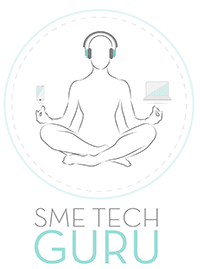By Zuko Mdwaba, Area Vice President at Salesforce South Africa
The world of work has radically changed over the past 24 months, challenging every company to reimagine the employee experience, how they enable a more connected and productive workplace, and continue to foster a sense of community and culture in a digital-first environment.
As 9 out of 10 companies plan to shift to a hybrid model, according to McKinsey, embracing a success from anywhere mindset will allow companies to go forward with agility, creativity and a beginner’s mind. It will also become a greater factor in companies’ efforts to attract and retain talent. This includes not only transforming the way they operate but also how they boost social interaction and empower employees to do their best work.
However the look of physical spaces and ways of working may change, company culture will remain an integral part of the employee experience and can impact productivity.
By combining the best of physical and digital worlds, business leaders have an opportunity to create a better workplace — one that allows us to be more connected to each other, and find more balance between work and home — ultimately leading to increased innovation and better business outcomes.
Encouraging flexibility, and finding new ways to connect
From now on, many employees will expect to go into the office when it works for them and for their teams and customers, whether that’s once or twice a week. Amid growing calls for flexibility among employees, leaders should look at each of their organisation’s roles and explore what is possible, including flexible working models to suit their situations.
Developing different ways of working – flexibly, fully remotely or entirely office based – can help meet employees’ needs, increase individual productivity, prioritise wellness, and drive new levels of collaboration. At the same time, however, it’s important that leaders also invest in maintaining and scaling their company’s cultural initiatives and enhancing employees’ sense of belonging.
This includes defining what’s most important in how and where teams work, how they communicate and what behaviours are most important to them. Prioritising in-person meetings on set days, team off-sites and volunteering activities, encouraging impromptu video calls and posting internal leadership updates directly to their team’s channel are just some examples of how leaders can help keep teams connected, even from afar.
While embracing the digital-first world we now live in, many employees still want to have the ability to connect in person – to learn, innovate, and become inspired. Making our workspaces more intentional, evolving the ways employees use and experience the office enables leaders to plan for greater flexibility to prioritise productivity and balance.
Freeing up unused desks and experimenting with flexible spaces like booths and social spaces can help meet employee’s changing needs and foster collaboration and innovation.
Finding new and creative ways to connect in-person and virtually can be the next evolution of their culture.
Supporting Employees to Redefine the Workplace
Just as many employees relied on business leaders to help them succeed during the pandemic, companies are going to need to help them on the other side of the pandemic. In an all-digital environment leaders must remain committed to actively listening to their employees and tailoring their approach to best fit their experiences.
Ensuring that employees feel heard and involved is a challenge for any leader, particularly as teams become more distributed. Introducing regular surveys on wellbeing can help leaders understand the changing priorities and needs of their workforce, and make data-driven decisions around investing in benefits and programs to better support employees and their families.
How a company collaborates is a direct reflection of their culture. Going digital-first demands creating a digital HQ, ensuring employees have the right tools to foster greater collaboration and communication from anywhere. This explains why more and more companies are looking to collaborative technologies to transform the ways they work – to connect, share information, and get work done.
Bringing employees, customers and partners together on one platform and communicating in real-time can help increase productivity and empower employees to redefine the workplace on their own terms. Yet they’re just some ingredients to creating a better workplace culture and connection in a digital-first new world. Evolving physical spaces, prioritising in-person gatherings and leading with empathy all have an important role to play.


